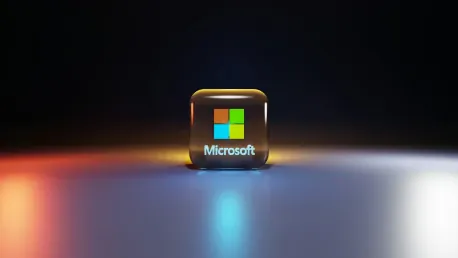Microsoft continues to push the boundaries of software development with the release of the seventh preview of .NET 9 on August 15, 2024. This preview showcases several significant enhancements aimed at improving developer experience, optimizing performance, and expanding functionalities across the .NET ecosystem. Set for production release in November 2024, this preview marks an important milestone in Microsoft’s ongoing commitment to innovation. The latest preview includes major improvements to C#, the .NET runtime, the software development kit (SDK), and integral frameworks such as ASP.NET Core and .NET MAUI. These upgrades are designed to address the evolving needs of developers and ensure that the .NET platform continues to be a reliable and efficient choice for modern software development.
C# Language Enhancements
One of the standout additions in this .NET 9 preview is the new attribute for C#, System.Runtime.CompilerServices.OverloadResolutionPriority. This attribute allows API authors to tweak the priority of overloads within a single type, helping developers choose the correct API even when facing multiple ambiguous options. This enhancement makes API interactions more straightforward and intuitive. Moreover, this update is expected to streamline the development process by making the interactions within the codebase more predictable and manageable. Developers can now better control API calls, reducing the likelihood of errors and improving code readability. This marks a significant step forward in enhancing the usability of C# for both new and seasoned developers.
The introduction of such attributes reflects Microsoft’s dedication to refining the programming experience, ensuring that developers have the tools needed to write cleaner, more efficient, and maintainable code. By providing features that improve the control and predictability of code interactions, Microsoft is addressing some of the common pain points faced by developers. These improvements are not just about adding new features but about enhancing the overall developer experience, making the .NET platform more robust and easier to work with. This is in line with Microsoft’s broader strategy to continually enhance its development tools to meet the growing complexities and demands of modern software development.
.NET Runtime Improvements
The .NET runtime has received several key upgrades that are slated to enhance the overall performance and efficiency of applications. One of the significant updates is the experimental support for the Scalable Vector Extension (SVE), a SIMD instruction set designed for ARM64 CPUs. This addition will likely yield notable performance boosts on ARM-based systems, making applications faster and more responsive. Additionally, a new compiler optimization called “strength reduction” has been integrated into the runtime. This technique replaces slower loop operations with faster, logically equivalent operations, thereby speeding up the execution process. Developers can expect their loops to perform better without having to alter their existing code.
Another noteworthy improvement is the dynamic adaptation to application sizes (DATAS), which is enabled by default in this preview. DATAS allows the runtime to dynamically optimize itself according to the size of the application. This ensures better performance and resource management, making applications more efficient and reducing the overall resource footprint. These runtime improvements signify Microsoft’s commitment to enhancing the performance and efficiency of applications built on the .NET platform. By incorporating advanced optimizations and ensuring that the runtime can adapt dynamically to different application sizes, Microsoft is providing developers with the tools they need to create high-performance applications that can run efficiently on a variety of systems. This is crucial for modern applications that demand high performance and efficient resource usage.
SDK Advancements
The .NET 9 preview also brings significant updates to the software development kit (SDK), particularly in container publishing. Enhancements for insecure registries will make it easier and safer to publish containers. Consistent environment variables ensure a more predictable environment for container operations, offering developers a smoother and more reliable experience. Furthermore, the first release of workload sets offers developers greater control over the workloads they install. This feature is crucial for maintaining an efficient development environment, allowing developers to manage the rate of change in their installed workloads. By providing this level of control, Microsoft is enabling developers to tailor their environments to better suit their specific needs and workflows.
These SDK improvements underscore Microsoft’s focus on enhancing the developer experience, offering tools and features that streamline tasks and promote more efficient project management. The updates aim to eliminate common pain points, making the overall development process more seamless and enjoyable. The introduction of workload sets is particularly noteworthy as it allows developers greater flexibility and control over their development environments. This flexibility is essential in modern development where projects can vary significantly in their requirements and complexity. By addressing these needs, Microsoft is ensuring that the .NET platform remains a versatile and powerful tool for developers.
Library Enhancements
Several important updates have been made to the .NET libraries. The removal of the BinaryFormatter deserializer, which has been deemed unsafe, marks a significant shift towards more secure data handling practices. This change ensures that developers rely on more modern and secure methods for serialization and deserialization tasks. Additionally, the introduction of the X509CertificateLoader class brings a more straightforward and efficient way to handle certificates. This new class follows a “one method, one purpose” design, which simplifies certificate management tasks and reduces potential errors. This focused approach helps developers handle security certificates more effectively.
The System.IO.Compression API has also been updated to use zlib-ng, resulting in more efficient and consistent processing across different hardware and operating systems. These library enhancements highlight Microsoft’s dedication to providing secure, reliable, and performant components within the .NET ecosystem. By making these updates, Microsoft is addressing both security and performance concerns, ensuring that developers have access to the latest and most secure technologies. The focus on security and performance is a clear indication of Microsoft’s commitment to providing a robust and reliable platform for developers.
Framework Enhancements
ASP.NET Core Improvements
ASP.NET Core continues to evolve with the introduction of native ahead-of-time (AOT) compilation for apps using SignalR. This feature allows developers to achieve significant performance gains by compiling their applications directly to native code, bypassing the need for just-in-time compilation at runtime. Moreover, the new transformer registration APIs in Microsoft.AspNetCore.OpenAPI have simplified the process of registering transformers. These updates aim to streamline the development of web applications, making the process more efficient and the applications themselves more performant and secure. The combination of these improvements ensures that ASP.NET Core remains a powerful and flexible framework for building modern web applications.
These enhancements are designed to provide developers with the tools they need to build high-performance web applications. Native AOT compilation is particularly significant as it can dramatically improve the performance of applications by eliminating the overhead of just-in-time compilation. This is crucial for applications that require high performance and low latency. The transformer registration APIs further simplify the process of building web applications, allowing developers to focus more on writing code and less on managing configurations. These improvements reflect Microsoft’s ongoing commitment to providing a robust and flexible platform for web development.
.NET MAUI Enhancements
.NET MAUI brings several notable enhancements in this .NET 9 preview, including improvements to layout performance and the addition of new controls such as the MultiSelectListBox. These updates are aimed at providing a more responsive and feature-rich experience for developers building cross-platform applications. The enhanced layout performance ensures smoother and faster rendering of UI elements, which is crucial for maintaining a high-quality user experience. The introduction of new controls expands the toolkit available to developers, allowing for more versatile and dynamic application interfaces. These improvements demonstrate Microsoft’s dedication to making .NET MAUI a comprehensive solution for cross-platform development needs.
Overall, the .NET 9 preview 7 is a testament to Microsoft’s ongoing efforts to innovate and improve the development experience across the .NET ecosystem. By focusing on language enhancements, runtime optimizations, SDK improvements, and library upgrades, Microsoft continues to empower developers to build high-performance, reliable, and secure applications. The newest features and updates ensure that .NET remains a cutting-edge platform that meets the evolving demands of modern software development.









